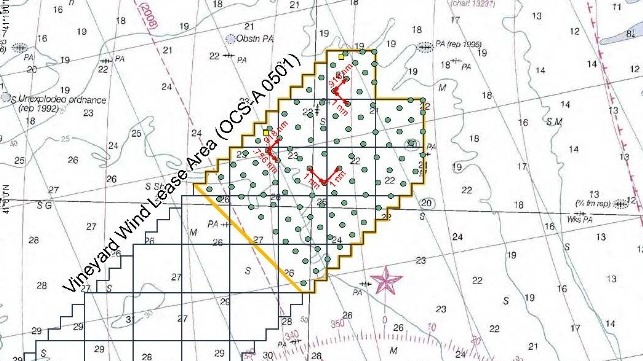BOEM Releases Long-Awaited Offshore Wind Review

The U.S. Bureau of Ocean Energy Management (BOEM) has released its long-anticipated update to its environmental impact statement (SEIS) for the Vineyard Wind offshore windfarm, including an analysis of the cumulative effects of offshore wind development off the U.S. East Coast.
BOEM predicts that developers will eventually install up to 2,000 wind turbines producing up to 22 gigawatts of power off the Eastern seaboard. The first significant project in the permitting pipeline is Vineyard Wind, an 800 MW, 57-turbine development off the coast of Rhode Island.
The 420-page supplemental EIS acknowledged that under all scenarios, Vineyard Wind will have a moderate impact on commercial fishing, and concluded that the cumulative effect of multiple windfarms will have a "major" adverse impact on East Coast fisheries. In all but one scenario, the cumulative effect on navigation would be a "major" adverse impact. ("Major" indicates that the affected community would have to adjust to significant disruptions and may see measurable effects indefinitely.)
In a statement, BOEM said that it "recognizes that fishing is an important use of federal waters that will be considered in its decision-making." The agency said that it will work with commercial and recreational fishermen and will solicit input from the fishing community.
In 2019, BOEM's decision to conduct a supplemental review of cumulative impact of all East Coast windfarms resulted in a delay in permitting and construction for Vineyard Wind, drawing criticism from the wind industry. The long-awaited issuance of the SEIS report drew commendations from wind developers and OSV operators. “This first step will help our country catch up to other nations that are already safely and successfully operating offshore wind farms," said Tom Kiernan, CEO of the American Wind Energy Association.
"Offshore wind can be a pipeline of jobs and growth throughout America, especially along the Gulf Coast where companies already have the expertise and experience needed to build a new offshore energy sector," said Erik Milito, the president of the National Ocean Industries Association (NOIA), the main industry organization for offshore vessel operators.
Consultations with affected communities continue. BOEM is holding a series of webinars on the draft SEIS during a 45-day comment period. In addition, northeastern fishermen, scientists and regulators will soon meet at a National Marine Fisheries Service (NMFS)-sponsored symposium to discuss the state of the current science regarding the impact of wind farms on fisheries. The session is being organized by RODA with an NMFS grant, and it will be managed by a consultancy specializing in conflict resolution and mediation.
“Much of the work on offshore wind is occurring on a development-by-development, state-by-state basis. Yet the science and management of our fisheries, marine mammals, and marine endangered species occur at a regional-scale – North Carolina to Maine,” said Jon Hare, director of the Northeast Fisheries Science Center. “Therefore, I am excited to be able to work with RODA and BOEM to support the state-of-the-science symposium with the goal of developing a regional science plan.”
